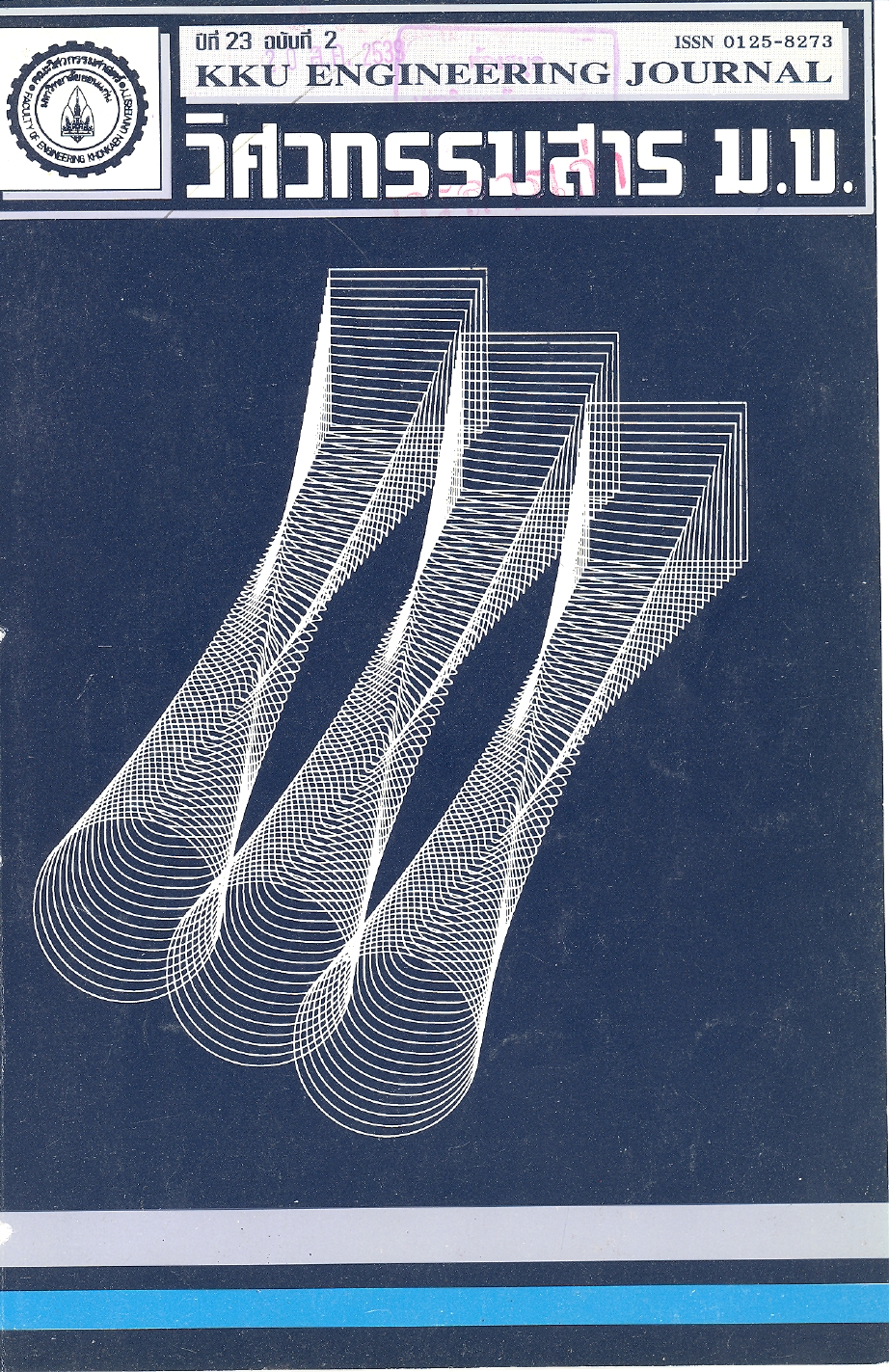The Utilization of Carbonized Rice Hulls as an Alternative Domestic Fuel
Main Article Content
Abstract
A carbonization of rice hulls in volatile-loop batch carbonizer was studied. Heating of rice hulls was done through conductive fins, using an external fuel. Three main studies were conducted : 1) a study of effect of temperature distribution and amount of fuel on properties of carbonized rice hulls, 2) a study on briquetting method of carbonized rice hulls using tapioca starch as binder, and 3) a comparison of carbonized rice hull briquettes to wood charcoal.
The results indicated that the carbonizd rice hulls produced contain 31.7% of ash, 26.8% of volatile matter, 41.5% of fixed carbon, and 4.2% moisture by weight. An average heat content is 15,567 joule/g.
For briquetting process, an optimum starch to carbonized rice hulls ratio was found to be 1:10. With this ratio, compressive strength of the carbonized rice hull briquettes is 6.52 kg/cm2 which is strong enough to withstand damage during transport and stocking
Comparison the cooking efficiency of carbonized rice hull briquettes to wood chatcoal indicated that the carbonized rice hull briquettes is suitable for domestic use. The capital investment of the carbonized rice hull briquettes is 1.54 Baht/kg.
Article Details
This work is licensed under a Creative Commons Attribution-NonCommercial-NoDerivatives 4.0 International License.



